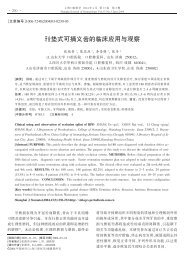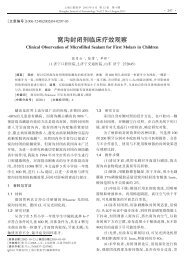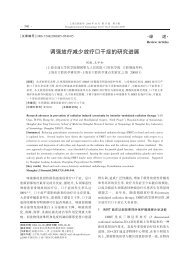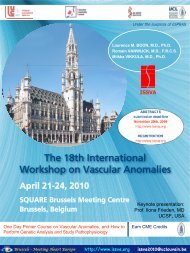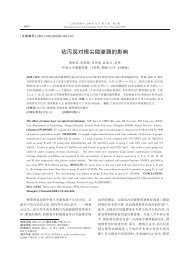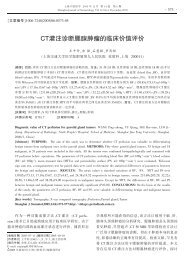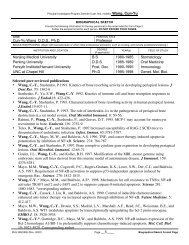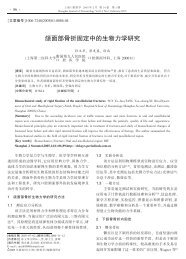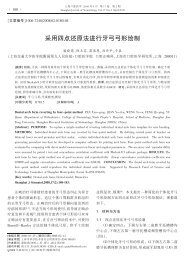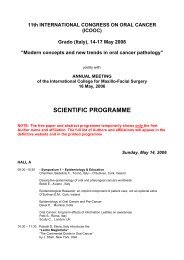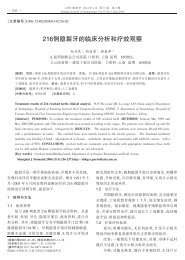core curriculum cleft lip/palate craniofacial anomalies
core curriculum cleft lip/palate craniofacial anomalies
core curriculum cleft lip/palate craniofacial anomalies
Create successful ePaper yourself
Turn your PDF publications into a flip-book with our unique Google optimized e-Paper software.
Core Curriculum for Cleft Palate and other Craniofacial Anomalies<br />
G. Adolescents<br />
1. When the permanent teeth have erupted, definitive orthodontic treatment<br />
begins.<br />
2. Treatment may involve surgical or orthopedic repositioning of the jaws to<br />
optimize jaw relations and occlusion. Close cooperation between the<br />
orthodontist, surgeon, prosthodontist (if necessary), and general dentist is<br />
required during this time.<br />
H. Adults<br />
Adults generally require the same treatment as children and adolescents with some<br />
possible exceptions. Since adults have completed growth, no possibility exists for<br />
influencing jaw growth through orthopedics. Additional or more extensive surgery<br />
may be required to achieve the same result. Alveolar bone grafts are less successful<br />
in adults, and thus may not be indicated if a graft would not carry significant<br />
benefits. Otherwise, a properly treated patient should have the same dental status as<br />
a non-<strong>cleft</strong> person. All aesthetic and functional goals can and should be addressed.<br />
I. Record keeping<br />
This is an important part of the orthodontist’s role on the <strong>cleft</strong> and <strong>craniofacial</strong> team,<br />
as it is necessary for assessment of treatment results.<br />
1. Infant – Photographs should be taken regardless of any treatment. Casts<br />
should be made prior to and following any pre-surgical orthopedic treatment.<br />
Infant casts are important to assess the wide variability of <strong>cleft</strong> morphology<br />
and to compare the results of different treatments over time as growth<br />
occurs.<br />
2. Preschool – Records taken during this time period depend upon treatment<br />
rendered. If palatal expansion is done, casts, photos, and a posteroanterior<br />
cephalogram are important to assess the result of treatment.<br />
3. School aged – Full or orthodontic records should be taken prior to any<br />
orthodontic intervention, including incisor alignment and palatal expansion.<br />
These records should include, but are not limited to casts, photos,<br />
radiographs (panoramic, occlusal, periapical, and<br />
lateral/submentovertex/posteroanterior cephalograms), and clinical<br />
examination. Further, appropriate records, such as casts and photos, should<br />
be taken after treatment.<br />
4. Adolescents – Full orthodontic records as above should be taken before and<br />
after definitive orthodontic treatment. Progress records should be taken<br />
before and after orthognathic surgery, and more often as necessary.<br />
5. Adult – Full records should be taken as described above.<br />
20<br />
© 2004 American Cleft Palate-Craniofacial Association



